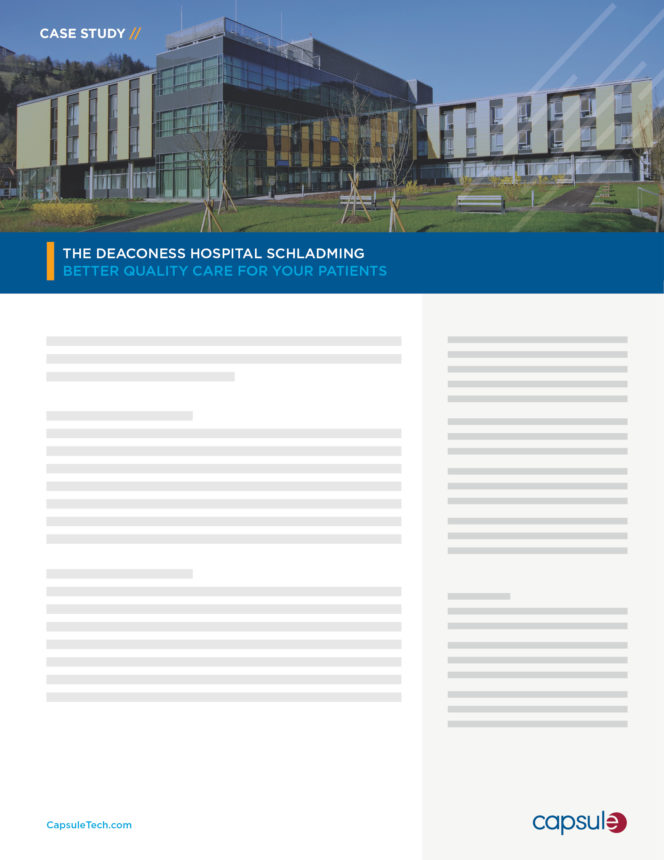In the low-acuity units of hospitals, providers must sometimes address complicated patient monitoring cases. These include cases of co-morbidities, as well as cases caused by unknown and highly unpredictable risk factors. Patients both inside and outside of intensive care units (ICUs) are on complex medication, and drug interactions can further complicate care. Even in low-pressure environments, deterioration of a patient’s health can easily go undetected.
Adding to the issue, intricacies within today’s non-critical care environment require providers to handle increasingly complex workflows while balancing stricter timelines.
One of the major challenges currently plaguing hospital organizations, along with their staff, is the ability to access the right data at the right time while also securing quality face-time with patients. Finding comprehensive information on a patient’s condition can be imprecise and incomplete. Overburdened providers are tasked with pulling data from multiple disparate systems and file types. These tasks are incredibly time-consuming, and take away critical time that can otherwise be utilized working directly with patients.
To enhance quality and safety in this new era of compressed care, health systems are moving away from episodic patient monitoring to integrated surveillance. The use of modern technologies is needed to upgrade and connect legacy and outdated devices. With these innovations, human error has the potential to be reduced with quality and contextualized reporting.
Integrated surveillance in non-critical patient care focuses on three major areas:
- Improving workflow efficiency,
- Ensuring data accuracy, and
- Enhancing clinical usability.
Learn About Capsule Vitals Plus: Bedside Monitoring and Documentation
From Patient Monitoring to Integrated Surveillance
1. Improving Workflow Efficiency
The move from the manual patient monitoring to electronic data collection has helped consolidate, standardize, and integrate patient history with other correlative data to reveal health trends directly from the bedside. Moving charting time from hours to minutes, providers now have the opportunity to spend more quality time with patients directly, assessing their symptoms while humanizing the overall care continuum.
An added benefit of the technological revolution within healthcare includes the development of an Early Warning Scoring System (EWSS), adding another layer of protection to rapid response teams with quick interventions at the first sign of patient decline. In order to be effective, early warning scores, like single-parameter alarms, must monitor the status of the patient and have a defined activation criterion that prompts intervention.
GET THE WHITE PAPER: Capsule Vitals Plus with Early Warning Scoring System
2. Ensuring Data Accuracy
Medication error reporting left a total global cost of $326 billion in 2018, making these mistakes incredibly costly. Additionally, the CDC estimates 250,000 Americans die annually due to medical errors.
Technological advancements to documentation are on par to curb these fallacies caused by human error. With increased accuracy in electronic vital sign recording, human error in transcription and data/chart mix-ups is virtually eliminated. With all patient information easily accessible from streamlined data servers, better team communication is achievable, even during shift changes.
3. Enhancing Clinical Usability
Information overload can overwhelm clinicians and negatively affect efficiency — requiring doctors and nurses to sift through large quantities of medical data to find the specific information needed. Newly redesigned electronic health records can help clinicians cut through the clutter and reduce information overload.
Providers know that early detection can make the difference between life and death, so an EWSS is treated with utmost importance. Patients typically show signs of deterioration eight or more hours before a critical event. An EWSS uses hospital-configured scoring systems and interventions to identify patients at risk and guide care teams right at the bedside.
A Future of Better Quality Care
For an in-depth view of the future of quality patient care, take a look at the Deaconess Hospital in Schladming, Austria. Deaconess applies the power of device connectivity to carry out quality nursing care. To accomplish this, the hospital partnered with Capsule Technologies to integrate all patient data into a single, consolidated hospital system.
Prior to this partnership, patient monitoring was a complex, time-consuming process that took valuable facetime away from clinicians and patients. Now, with the help of Capsule, the data from numerous medical devices are seamlessly transferred into the hospital information system. This solution ensures the timely delivery of data, enabling clinicians to make well-informed decisions faster, while simultaneously improving the level of patient safety and staff satisfaction.
To learn more about how the Deaconess Hospital and Capsule collaborated to improve the experience of its more than 23,000 yearly patients, download the case study.
Read the Deaconess Hospital Schladming Case Study
Download